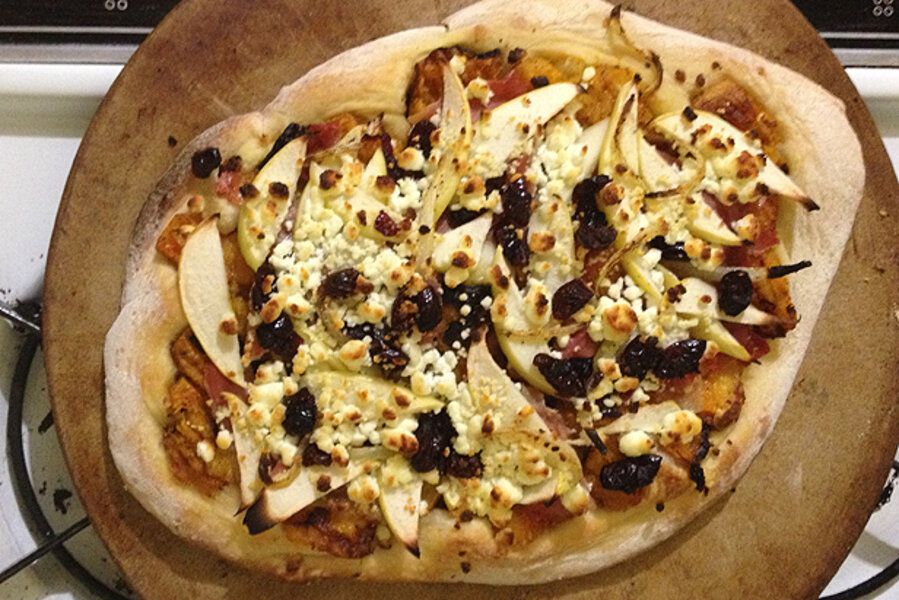Butternut squash pizza
Loading...
The first flurries may be flying, but the produce aisles are still bursting with butternut squash, a vegetable that does double duty in fall and winter.
This pizza, which celebrates the savory, sweet, complex flavors of fall and winter, was inspired by a pizza a roommate of mine made years ago. I don't remember exactly what was on it, aside from butternut squash, though I do remember thinking she was crazy as she was preparing it in the kitchen. A pizza made with a weird orange vegetable? Without pepperoni? Without mozzarella? Without sauce? Could you even call such a thing a pizza? One taste and I was convinced, this wasn't just pizza, it was phenomenal!
The memory of that pizza must have been kicking around in the back of my mind because this fall the craving for some type of butternut, topped with some kind of gooey cheese, baked on soft chewy dough hit me. After two tries I had mastered the right topping combination: sweet squash and apples, complimented by savory prosciutto, sharp onions, and tart cranberries. A layer of soft Chevre cheese put the whole thing over the top.
I like to buy the pre-made pizza dough at the grocery story (usually found near the deli or the bakery), cut it in half with my pizza cutter, and freeze half for later. This recipe is based on that proportion, and makes a small pizza, perfect for two with a side salad, or a meal for one if you're really hungry. You can easily double the recipe and increase the baking time to feed a larger group. And you can easily use your own homemade dough recipe.
Butternut squash pizza
1/2 of one medium butternut squash, peeled and diced into medium pieces
1/2 tablespoon olive oil
1 teaspoon salt
1 teaspoon pepper
1/2 teaspoon garlic powder
Pinch of chili powder
Pinch of cinnamon
1/2 Granny Smith apple, sliced thin
About 10 thin slices of red onion
3-4 slices of prosciutto (*optional, may leave out for a vegetarian option)
A handful of dried cranberries
About 1/4 cup Chevre cheese, crumbled
1/2 package of store-bought (or homemade)pizza dough
1. Preheat oven to 400 degrees F.
2. Peel, slice, and dice the butternut squash. Lay squash in an even layer across baking sheet, drizzle with a bit of olive oil, and sprinkle with salt, pepper, garlic powder, chili powder, and cinnamon. Use a spatula to toss until oil and spices cover all sides of the squash. Bake in preheated oven for 20-25 minutes, turning once, until squash is soft, fragrant, and the edges are beginning to brown. (If you're not a fan of raw red onion toss your onion slices in with the squash in the last 5 minutes and let them soften up a bit.)
3. While the squash is baking, cut up your apple and onion and roll out your pizza dough. When squash is done and cooled slightly transfer to top of pizza dough, and using a fork, squish all the squash cubes down so they make a single layer of squash across the pizza. Leave space around the edge for a crust if you wish. Add the apple, onion, prosciutto, cranberries, and Chevre to the top of the squash. (Go easy on the Chevre, it's much stronger and creamier than Mozzarella.)
4. Bake your pizza for 20-30 minutes, until dough is fully cooked, and cheese is browned a bit. Slice and cool for 5 minutes before serving.






